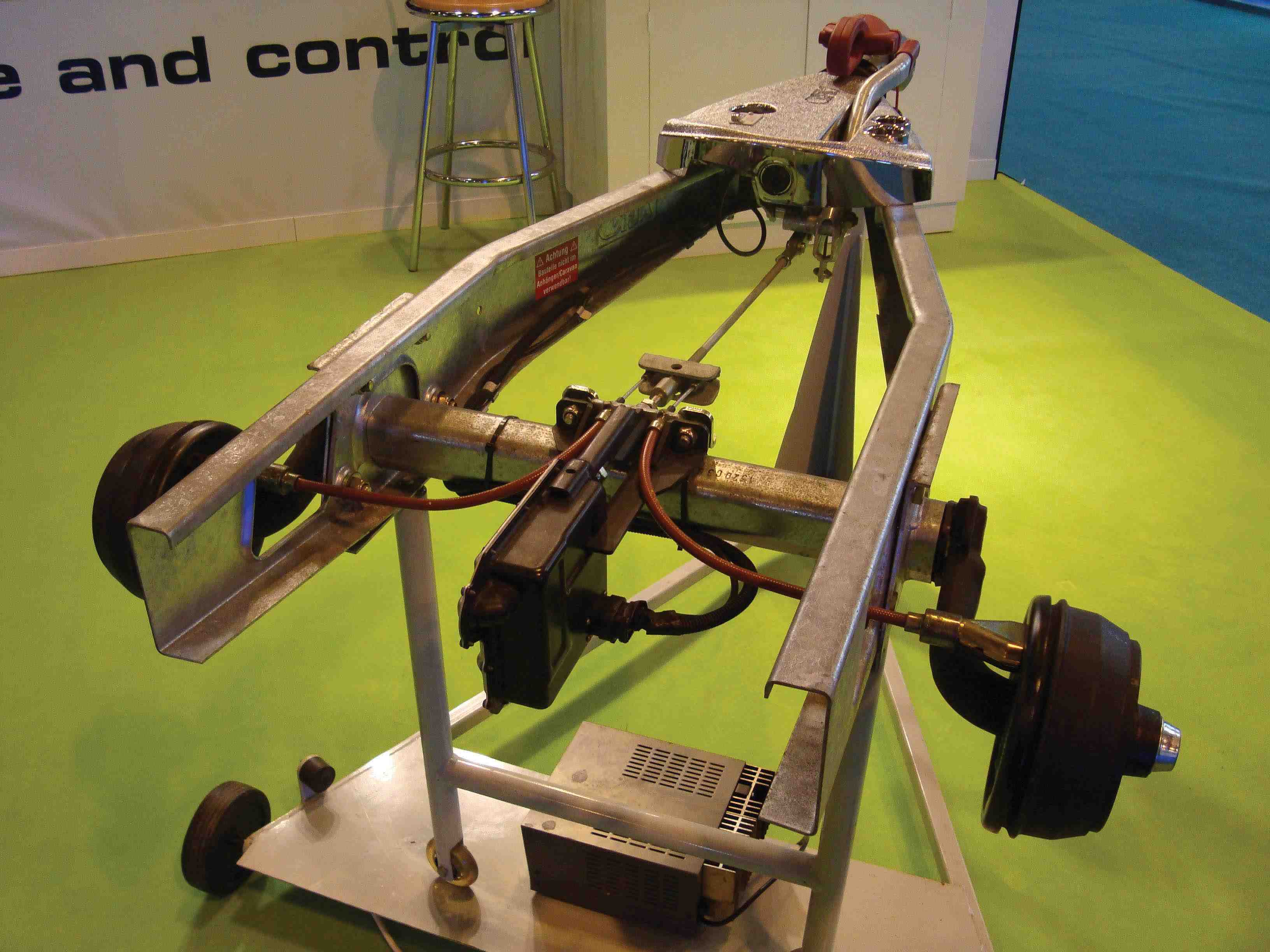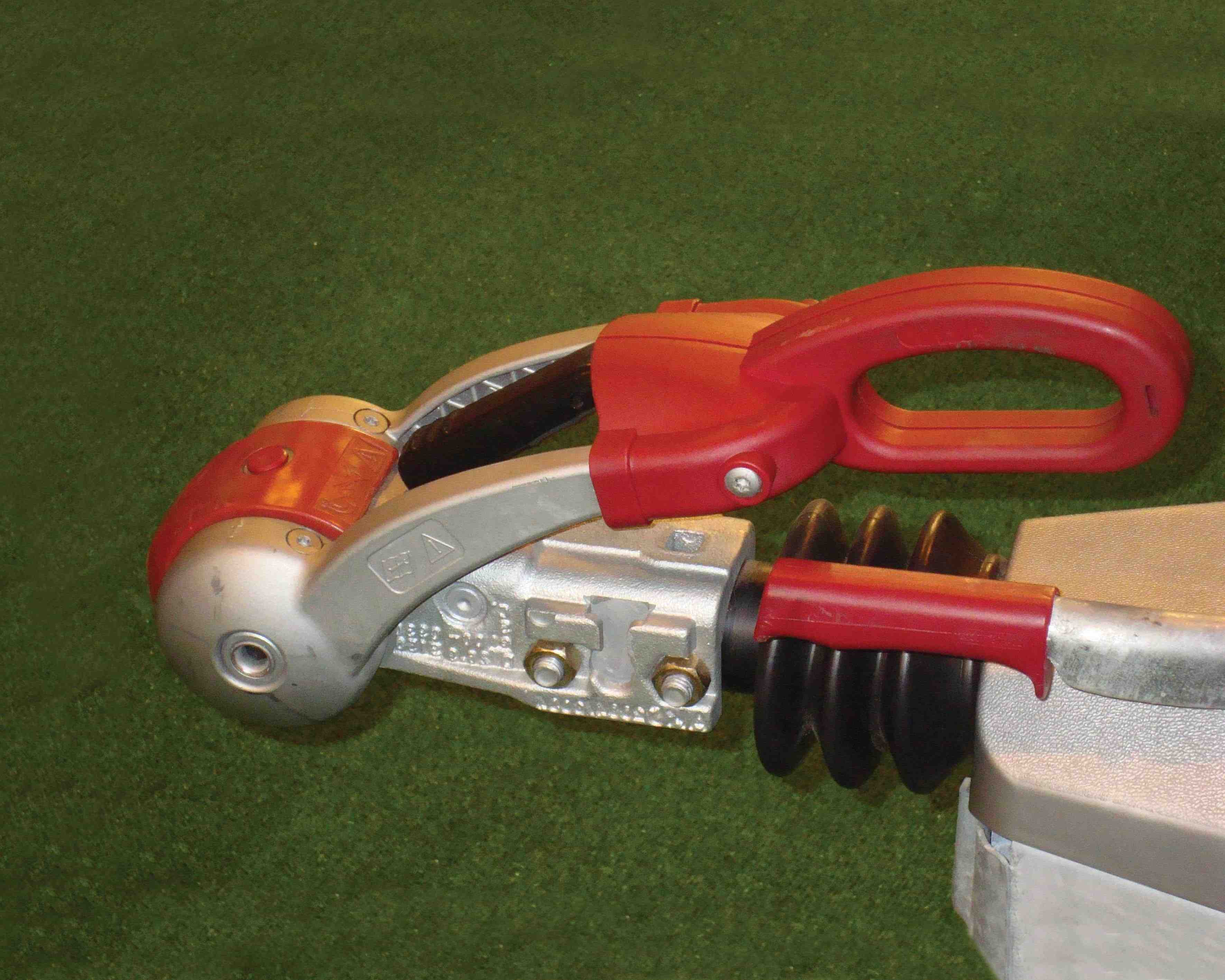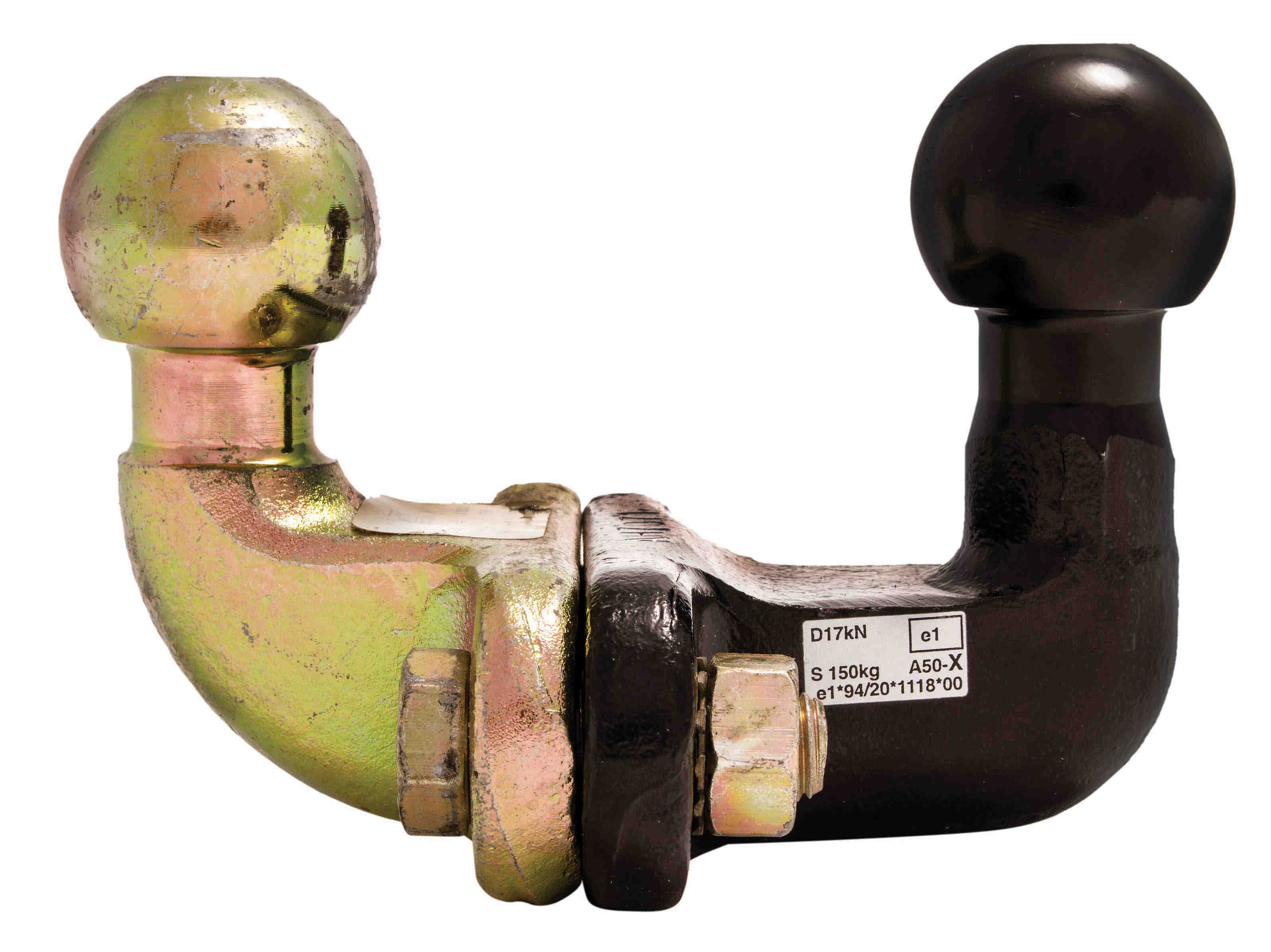 AL-KO introduced the ATC (Automatic Trailer Control) system, for its chassis in 2007, and the idea has taken off with many manufacturers fitting it as standard on some models. BPW has a similar system called iDC (Intelligent Drive Control) for use on its own chassis, such as those used by Elddis in the UK. Practical testing has proved that both these systems are effective in maintaining stability under severe conditions.
AL-KO introduced the ATC (Automatic Trailer Control) system, for its chassis in 2007, and the idea has taken off with many manufacturers fitting it as standard on some models. BPW has a similar system called iDC (Intelligent Drive Control) for use on its own chassis, such as those used by Elddis in the UK. Practical testing has proved that both these systems are effective in maintaining stability under severe conditions.
These systems rely on sensors. When the sensors detect the sideways motion has gone beyond pre-determined limits, they gently apply both the caravan brakes together until the unit straightens up. The systems draws power from the towcar's electrics (12N or 13-pin) and features a self-test mode on start up and a status display on the caravan, which shows when it is ready to go. Neither has any indication in the towcar as to whether the system is working or faulty, but at least in the case of the iDC, it will revert to its start condition (brakes off) if there is a fault such as a blown fuse.

A Winterhoff stabiliser head.
Both ATC and iDC are common factory fitted options or are available for retro fit on most recent AL-KO or BPW chassis as appropriate. Both are intended to be used in conjunction with their manufacturers - existing hitch stabilisers. For these systems it is essential that the towcar's electrical supply system is able to supply sufficient power. In practice, experience has shown that failure of such systems is usually down to a blown fuse due to inadequate towbar wiring and the driver has no way of knowing about such a malfunction until the warning light on the caravan can be inspected, therefore it is recommended that the wiring is capable of supporting a current draw of 20 amps.

An AL-KO stabiliser head
There is also another system called the LEAS stabiliser that works rather differently, applying the brakes via an electrically-operated spring-controlled cam, whenever an out-of-limit yaw (snake) is detected. It takes its power from a separate socket on the car and also features an audible warning signal in the car. This German-made product is available from Conrad Anderson in the UK.
As with any stabiliser, great care must be taken to carefully match and load the car and caravan. These are emergency systems, they work effectively and enhance safety, but you must still drive with care, especially in high-speed conditions, and not rely on the unit to correct any mistakes you may have made.
Simplicity, lack of ancillary equipment and needing little or no adjustment in use has made this a popular alternative to blade stabilisers, helped by many caravan manufacturers that now fit the item as standard to nearly all models in the range. They are however significantly more expensive than the traditional blade type and some claim that due to the small area of grip on the towball they are less effective.
The principle is simple - a special caravan hitch takes the place of the standard hitch and fits over a dry towball. Inside is a set of friction pads that press directly on to the towball and provide resistance to hitch rotation and hence trailer sideways movement. Such a stabiliser hitch will help keep the caravan in line when passed by heavy vehicles or in a cross wind. The latest versions also have pads that will restrict vertical (pitching) movements as well.

A standard towball (left) A towball with an extended neck (right) is needed if you use an AL-KO stabiliser hitch
AL-KO makes its AKS system available in various versions to suit the weight of the caravan, so make sure you buy the right one if fitting it yourself. There is a guide on the side of the device that shows when the pads need changing, which can be done as a DIY job, following the instructions provided.
It is vital when using this kind of stabiliser that the towball is completely free of paint, grease or oil. Clean the ball with methylated spirit or similar to remove all traces of grease. A quick wipe over with a cloth is not enough. If you use your car to tow different types of trailer without such devices, you will always have to grease or degrease the ball each time you change.
The AL-KO stabiliser hitch is bigger than a standard hitch and cannot be used with a standard fixed flanged towball. A special extended neck towball must always be used with AL-KO stabiliser hitches, unless a swan-neck towball is used.
There can be a problem using an AL-KO stabiliser hitch with some vehicles that have spare wheels mounted on the rear door where the stabiliser handle operation is impeded by the presence of the spare wheel. A removeable handle is available from AL-KO at additional cost, which usually resolves the situation.
Caravans with BPW chassis, such as Elddis caravans, are fitted with a stabiliser hitch supplied by Winterhoff. This hitch uses the same principle of direct mounting to the towball, but it works with standard towballs as well as swan-necks. In theory you can fit an AL-KO version to an BPW chassis and a Winterhoff to an AL-KO chassis, but there are often difficulties with clearances especially with BPW's gas-assisted handbrake. It is thus generally preferable when retro-fitting to use the stabiliser applicable to the chassis it was designed for. And neither should be fitted to any chassis that has the older 360 degree fully-rotating hitch, as the stabilising system will be less efficient. The Westfalia SSK unit is of a similar design and operating principle.
The towball mounted stabiliser hitch is the obvious choice for the growing number of towcars that are fitted with detachable towbars, as the stabiliser is fully part of the caravan and nothing needs to be attached to it from the car.
Things to consider before buying
- Do you really need a stabiliser? They are of limited value for small camping trailers.
- Decide which type suits your use and budget.
- Check the stabiliser is suitable for your chassis, towing bracket and ball.
- If buying a new caravan consider a model with a stabiliser fitted as standard.
- If buying secondhand, take care to examine the stabiliser's condition and availability of parts.
Useful tips
- When fitting a new towball for a stabiliser hitch ensure you have the correct finish, in the main this will mean removing the paint or other finish with a fine-grade abrasive paper. Failure to do so will cause increased wear and may damage the hitch.
- Blade and hitch stabilisers sometimes groan when in use. This is can be caused by friction pad contamination. If not too severe, clean the pads following manufacturer's instructions. If severe the pads will need to be replaced.
- When using a stabiliser hitch clean your towball before each trip.
- When reversing or manoeuvring on or off a site it's usually best to take the stabiliser off first.
- Blade stabilisers may reduce ground clearance so take care boarding ferries and travelling over traffic calming humps.